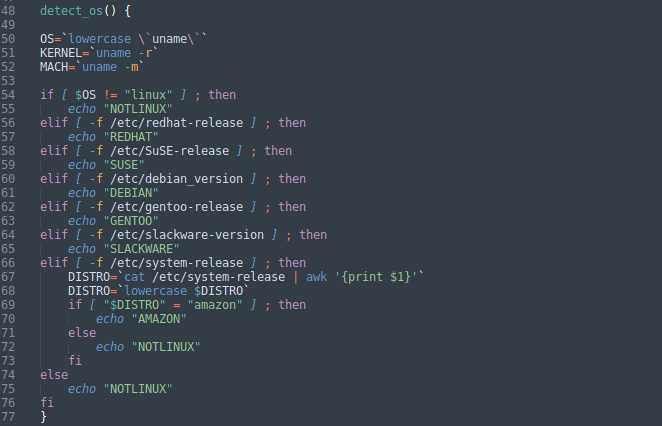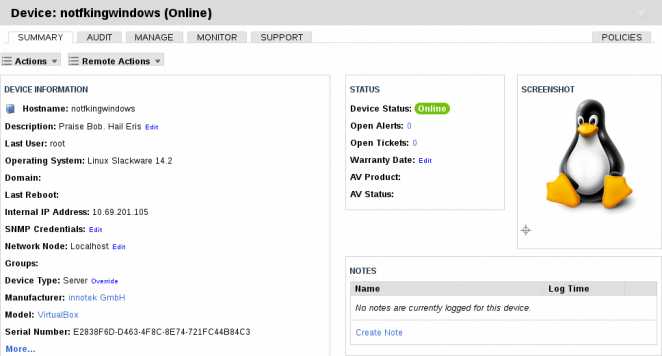Enterprise support for Slackware
As a managed service provider (MSP) we’re using an off the shelf remote monitoring and management (RMM) platform. Recently, and just for curiosity’s sake, I decided to take a closer look at the Linux agent offered by this platform. I’ll admit to being somewhat shell-shocked when I discovered that the installer had Slackware Linux on the list of supported distributions.

Stop the press, Slackware Linux support spotted in the enterprise.
The Mono requirement
However, my excitement quickly cooled when I stumbled upon the part where the installer checks to see if Mono is already installed. Mono is an open source implementation of Microsoft’s .NET Framework. Unfortunately, that means that the Linux agent is nothing more than the Windows agent neatly wrapped with service scripts.
A binary surprise
I also found it a bit troubling that the installer would add the agent as a binary payload embedded within the install script. I’m usually not in the business of installing unchecked binaries.

A binary payload in a shell script, what’s not to like?
Anyhow, at this point I decided I would not be installing this agent on my Slackware 14.2 powered office workstation. This experiment would, however, be better suited for a virtual Slackware 14.2 installation. Oh, and regarding that binary payload, its content simply gets stuffed into a tarball so we can investigate it further should we so desire:
TEMPARCHIVE=$TEMPDIR/agent.tgz MATCH=$($GREP --text --line-number '^LINUX_AGENT_BINARY_DATA:$' $0 | cut -d ':' -f 1) BINARY_START=$((MATCH + 1)) $TAIL -n +$BINARY_START $0 >$TEMPARCHIVE
An enterprise enrollment
Post-installation and Slackware Linux 14.2 is enrolled and somewhat ready for remote monitoring and management: